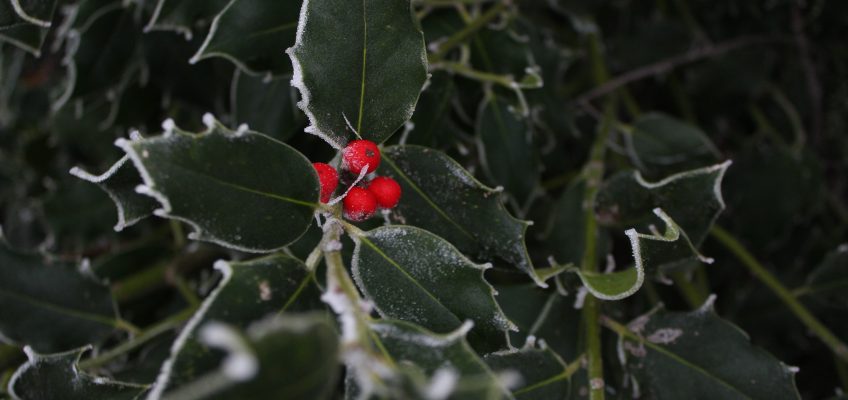Stare at a Christmas tree sometime. Or step back from your front door and take another look at your Christmas wreath. Once you get past the initial thought of “yet another Christmas season,” what do you see? Do you see “the wood of the cross on which hung the Savior of the world”? Do you see the “sacred head surrounded by crown of piercing thorn”? In the red holly berries do you see the “blood of the new and everlasting covenant”? What lies hidden in the idyllic scenes of Bethlehem is the blood of Gethsemane, the crown of Calvary, and the empty tomb of the garden—spring Easter lilies hidden beneath the winter snow.
In the liturgical year, the two major seasons are Easter and Christmas, with Easter being the pre-eminent celebration. In the first three centuries of the Church, Christians celebrated an annual memorial of Christ’s resurrection. But it wasn’t until the fourth century when the Church began to celebrate Christ’s birth. These earliest Christians understood what one Christmas carol tries to teach, “Christ was born to save.”
Today, in some ways, Christmas has surpassed Easter in importance and in energy exerted by liturgy teams, environment crews, and music ministers. Worse yet, the Christmas that we celebrate is too-often watered down and tamed of its deeper, daunting, and awe-full implication that this birth leads all of us to ultimate death and sacrifice. What we see is a harmless infant bundled in swaddling clothes; what is hidden is the linen wrappings that had swaddled the lifeless body of the God-Man. What we hear is the angel’s greeting to stupefied shepherds, “Do not be afraid; for behold, I proclaim to you good news of great joy that will be for all the people”; what is hidden is the angel’s greeting to grief-stricken women, “Do not be afraid! I know that you are seeking Jesus the crucified. He is not here, for he has been raised just as he said. Go quickly and tell his disciples.” What we taste is the Christmas feast; what is hidden is a bit of bread and a sip of wine shared at a final meal with friends. What we adore is a wooden manger cradling the child of Mary; what is hidden is the veneration of the wood “on which hung the Savior of the world. Come, let us worship.” O come, let us adore him.
Why is it important to keep Easter in mind when preparing our Christmas celebrations? When we rediscover the hidden images of Christmas, we reclaim the true power of this birth. The Incarnation becomes more than just a day in the year or an isolated season in the liturgical calendar. It becomes a way of life. The spirit of Christmas becomes more than just goodwill to all. It becomes a reminder of our commitment to the Word made flesh, a Word that brings glad tidings to the poor, proclaims liberty to captives, gives sight to the blind, freedom to the oppressed, and favor to all. This is the word, the good news, that Jesus died for. When we celebrate Christmas, we welcome that Word once again and recommit ourselves to live and die for that Word. When we celebrate the birth of the child Jesus in this way, we are really celebrating the life, passion, death, and resurrection of the adult Christ our Savior. We can make the connection between these two seasons every year in the songs and acclamations we choose, in the homilies we preach, and in the renewal of our baptismal promises.
After several years of unwrapping the hidden meanings of Christmas, maybe our children will know that the best gift one can give is their life for another, maybe our youth will have something to live for and something to die for, maybe those searching for the Christ-child will find the Body of Christ alive and risen among us. Merry Easter!



Leave a Reply